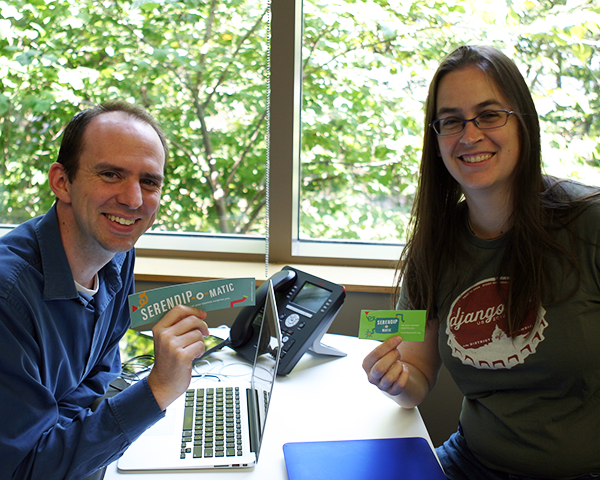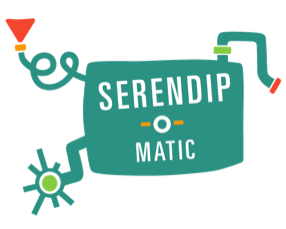
The National Endowment for the Humanities (NEH) recently conducted a “digital humanities barn raising” called “One Week, One Tool” at George Mason University in which a team of twelve strangers would design and implement a new software tool for humanities scholarship in only one week. The team was selected via a global application process and two LITS employees, Brian Croxall (Center for Digital Scholarship) and Rebecca Sutton Koeser (R-WIT), were among those chosen.
This was the second time that NEH’s Institute for Advanced Topics in Digital Humanities has hosted this grant-funded event and it is clear that One Week, One Tool is seen as more than simply an exercise in developing, building, and marketing a new tool. The program is also an educational opportunity to study the dynamics of using people that had never worked together before and placing them in a focused environment unencumbered by other work-related responsibilities.
“The project team was a really diverse group,” said Rebecca. “In addition to us, there was a high school librarian, a history professor, a literature professor, a design professor, a libraries and museums PhD student, and even an undergrad computer science and creative writing major who was the son of the history professor.”

The end result was Serendip-o-matic, a research tool that allows users to submit large blocks of text and receive related source materials from massive data repositories, including the Digital Public Library of America, Europeana, Trove, and Flickr Creative Commons. The end result is a healthy mix of photos, articles, and books delivered in a format that makes it easy for the user to quickly examine the material.
The driving concept behind the tool is to capture the sense of serendipity one gets when discovering something new and useful while researching something else. One of the challenges in a digitized world is that search tools are incredibly good at giving you exactly what you want. But some of the best discoveries in research happen when a person will find other books while walking through a library’s stacks that didn’t show up in a search but turn out to be useful.
To that notion, Serendip-o-matic is a serendipity engine that pulls out key terms and concepts from the submitted text and delivers results based on themed connections.
Since Serendip-o-matic was launched in August feedback has been very good. The audience has been comprised of researchers, librarians, and people interested in having their own institution’s information pulled into the service. People have also been using it to find images for blog posts.
Brian served as one of the co-project managers on the project team and he wrote an article about the experience for the Chronicle of Higher Education. “The site is whimsical and playful,” said Brian. “It’s not where someone would start with their research but a great place to discover additional resources.”
The experience was extremely positive for Brian and Rebecca. According to Brian, “It was a fun work environment where you had a large group of people very excited about a project and totally focused without any competing interests that occur in a normal work environment.”
“Everyone was so passionate about the project,” added Rebecca. “Once we finished brainstorming and picked our idea, everyone got on board and was enthusiastic.”


What a fun, exciting new research tool! As always, so proud to see a member of R-WIT represent the team so spectacularly. Congratulations, Rebecca and Brian, on the release of Serendipo-matic.